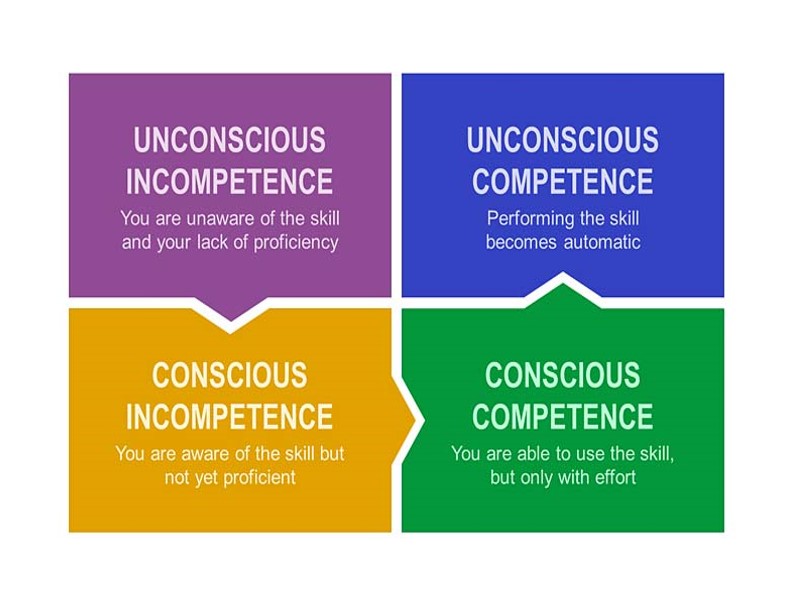Learning a new skill or making a change in behavior as a result of a training workshop or learning program does not happen just from your participation in the activity.
Real learning happens when the desired outcome of the training actually manifests itself in the performance of your activities or of the way you behave.
Unconscious Incompetence
To achieve real change requires that we go through four stages of learning. The first stage is making us aware of what we don’t already know. This is called the unconscious incompetence stage. We must first become aware of the things we need to learn and what we don’t already know in order to be open to the new material and to make the effort to put it into practice.
Conscious Incompetence
This leads us to the next level of learning, which is called conscious incompetence. Now we know what we didn’t know and are more open to learning, but we still cannot perform the new skill or behavior.
Conscious Competence
Once we start putting the skill or behavior into practice through guided instruction, we now go through the next stage of learning, which is conscious competence. This means that we can perform the skill or behavior, but we need to be thinking of what we’re doing and still be guided and corrected.
Unconscious Competence
The more we practiced the new skill or behavior. We gradually become better at it until it is fully learned and we reach the next stage, which is called unconscious competence. This is the goal of every training program were ultimately the new skill or behavior becomes a habit and second nature. We no longer need to think about how to perform each step we just do it naturally.
A good analogy is learning how to drive a car. The first step was to learn the theory behind driving in a classroom before we even went out on the road. The next step was to get behind the wheel with an instructor and to learn the different controls and operations.
Once we were comfortable with that, we started to practice driving perhaps in a parking lot and slowly went out on the road with the instructor who gave us feedback and made corrections.
As we practiced more and more we became confident based on the results and the feedback from the instructor until the point that we were doing things automatically.
When you drive to work next time, look at the faces of people driving the other cars. Most of the time people are thinking about something other than driving the car itself, but we all somehow show up to work safely. This is a good example of unconscious competence.
This process is more difficult for a behavioral change as compared to learning a mechanical skill, such as learning to operate a computer program or machine. A behavioral change is linked to beliefs and attitudes and thus requires greater awareness of your thoughts and reactions to people and situations in order to consciously put into practice the new behaviors.
Stephen Goldberg
